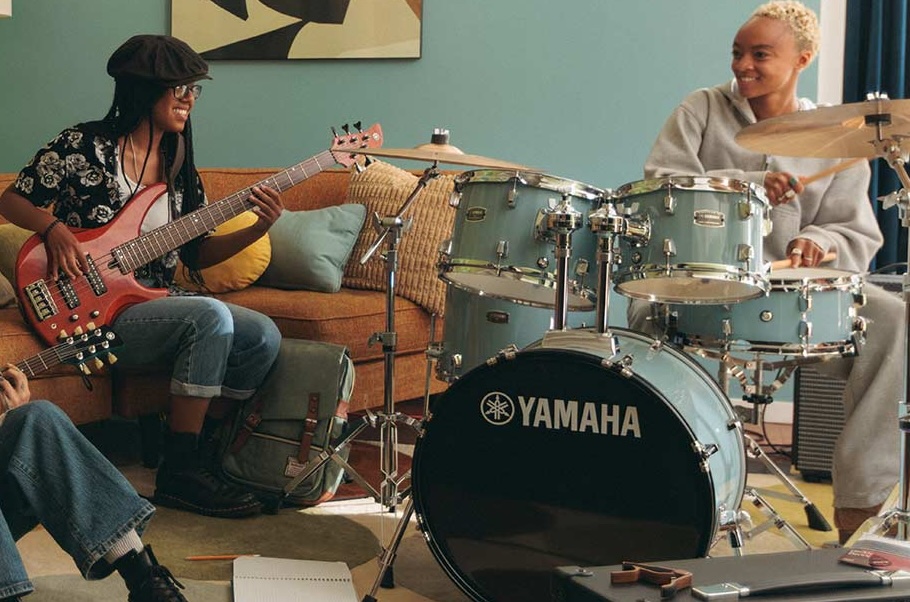Seven Ways to Become a Better Bass Player
Taking things up a notch.
One of the main differences between a novice and a pro is confidence. Putting in the work will help you lose the aura of a beginner, and the more you practice and play with others, the more confident you’ll become. Here are a few tips to take your bass playing to the next level.
1. KEEP IT SIMPLE
Fills can be cool, but a bassist who plays too many of them is either nervous or prioritizing ego over the song. It takes confidence to play only what’s needed, and executing foundational lines well is our #1 job. Simple and strong is better than tentative and fiddly any day.
2. LEARN TO LISTEN
Experienced players are expert listeners. Aim to support the story the singer is telling, and even if you don’t double guitar parts, understand how your basslines work with them. Ask whether the keyboardist is playing chord voicings with or without roots (and notice whether they’re playing down in the bass register, in which case you should place your notes elsewhere). Our primary task is to lock in with the drummer, but the best bass players are all-around musicians who are aware of everything happening around them.
3. FOCUS ON TIME AND GROOVE
Even the simplest basslines sound great if your timing is solid, so practice with a metronome and/or backing tracks to get better at not speeding up or slowing down. That said, at the end of the day, it’s not about metronomic perfection — it’s about breathing with the ensemble. Developing your groove and your familiarity with different types of feels enables you to interact effectively with the rest of the band.

4. PLAY DYNAMICALLY
In conversation, it’s normal to raise or lower your voice, pause for dramatic effect, and add extra sounds to get your point across. Playing bass is a conversation with your bandmates, so pay attention to the dynamic possibilities of each moment. Try keeping things simple in the intro, bringing up the energy in the verses and adding drama during pre-choruses or bridges … and be sure to get things pumping when you play the chorus. You should also consider dropping out strategically and changing the position of your picking hand when doing so enhances the song.
5. GET TECHNICAL
Buzzing notes make you sound less confident, and timid plucking can make even the right notes sound weak, so put a microscope on your technique. Get your fingers in shape. Press just behind the fret, not on top or too far back. Practice consistency in your two-finger plucking technique. If you play with a pick, keep your upstrokes and downstrokes clean. Analyze your slapping to make sure it’s efficient and on-time. Use your plucking hand to mute unused strings so that you don’t get unwanted string noise. Your approach should convey confidence in the notes you’re playing. Mistakes are inevitable, but knowing how to quickly and smoothly recover makes you a pro.
6. BE A PRO
Dial in the bass tone that’s right for the gig. Practice effectively. Record yourself, then listen back and adjust accordingly. Show up early for rehearsals and gigs, and communicate conflicts as early as possible. Don’t make the mistake of thinking that rehearsal is for learning songs: Learn your parts before getting together with the rest of the band and be ready to record and/or take notes during band practice. At a gig, making noise between songs or playing unnecessarily during soundcheck are also dead giveaways that you’re just starting out.
Being able to read and write music, as well as having a rudimentary understanding of harmony, quickly lifts you out of the newbie zone. Speaking of which, nothing says “I’m new here” like scrambling to find the right notes, so learn the fretboard inside out so that when it’s time to fly, you can make great choices (or at least safe ones). And although it seems over the top to practice things in all 12 keys, it’ll go a long way toward making you feel like you truly know where the notes are.
7. HAVE THE RIGHT GEAR
Investing in a well-built, dependable instrument like the Yamaha BB435 is an important part of elevating your bass playing. And once you have the right bass, get it set up so you don’t have to fight it; if you have a “dirty” volume knob that crackles when you turn it or a jack that’s intermittent, get it fixed.
Always be sure to have a tuner and extra strings on hand, as well as working cables that are the right length; in addition, try to carry a backup bass if you can. On the road, a hardshell case is a must; around town, a good gig bag will do. You may also be expected to show up with a reliable, durable amp that’s loud enough and right for the gig. (Learning to be comfortable with unfamiliar amps is part of the job, too.) If you use effects pedals, get them in the right order — and be prepared to continue playing if they decide not to work.















